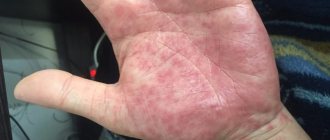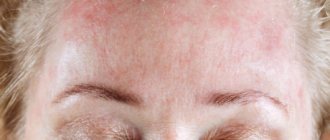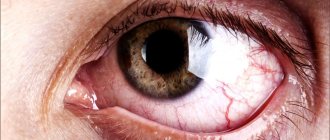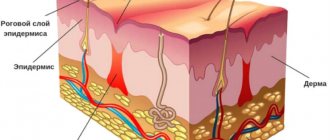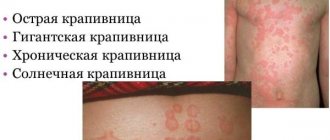Speech therapy consultation. "Show your tongue"
Tatyana Gorbunova Speech therapy consultation.
“Show your tongue” Show your tongue!
Sometimes, for proper speech development, a baby may need specialist advice, as well as massage and articulation gymnastics.
Ignorant people think that since a person has a tongue without bones, they can chat incessantly all day long... Actually this is not true. After all, the tongue, like any other organ, performs many different functions. And the most important of them are to perceive taste and produce sounds.
Unfortunately, there are quite serious diseases of the nervous system (encephalopathy, cerebral palsy, meningitis, encephalitis, which can affect the functioning of individual organs, including the tongue. In addition, sometimes it becomes lethargic and pale due to insufficient It is supplied with blood. A situation where blood stagnates in the tongue cannot be called normal - this is noticeable by its bluish color.
Parents cannot solve this problem on their own. Therefore, you need to rush to see a doctor or a specialist.
In addition, there are features in the very structure of the language that prevent a small person from pronouncing sounds correctly. What are these features?
The tongue is an old man.
Sometimes the surface of the tongue is covered in deep grooves and wrinkles. This often causes the child to feel a painful dry mouth. Every time he tries to make a sound, he experiences additional inconvenience and therefore becomes withdrawn and turns into a real beech and silent person. This feature of the tongue is often associated with disorders in the endocrine system. Therefore, the child must be shown to an experienced specialist - an endocrinologist.
Loose, like cotton wool.
There are anomalies when the tongue is completely devoid of a hyoid frenulum. As a rule, it looks loose and jelly-like. At the same time, it is difficult to force the tongue into the desired position to pronounce this or that sound. Finally, when this can be done, the tongue seems to get stuck and cannot move to the next position.
All this can lead to a person remaining tongue-tied for life. Such speech is usually described as “like porridge in the mouth.”
Massage and articulation exercises can transform a loose tongue. And the sooner you do this, the more successful the child’s speech development will be in the future.
Speech therapists are increasingly having to deal with this problem, the so-called geographic language. Its surface is covered with streaks of white, brown and pink, which is very reminiscent of the outlines of the continents on the map (hence the name). At the same time, the surface of the tongue looks shiny, as if polished, and there are few taste buds on it. The sensitivity of such a tongue is insufficient, and mobility is significantly limited.
Small tongue.
The baby may be born with a tongue that is too small. Experts call this phenomenon microglossia. In such a situation, in addition to problems with feeding (the baby’s processes of sucking, chewing and swallowing are disrupted, such an anomaly in the future may prevent the little person from pronouncing sounds normally.
To prevent this, it is necessary to conduct a special massage course with the child. It is advisable to start practicing articulatory gymnastics as early as possible. However, first of all, you should consult with two specialists: a surgeon-dentist and a teacher-speech therapist. In especially difficult cases, you have to resort to the help of a plastic surgeon.
The tongue is a giant.
The other extreme is a large, or, as speech therapists say, massive tongue. Sometimes it does not fit in the oral cavity, literally falling out. When pronouncing most sounds, the tongue seems to get stuck between the upper and lower rows of teeth. The speech of a child with such a defect makes an unpleasant impression on others, and over time the child may develop psychological problems.
Of course, a child can be taught to hide his tongue behind his teeth. This process is long and requires significant effort from the baby. To speed up this process, experts advise using massage and articulation exercises.
A tongue that is too large, with hypertrophied muscle mass, will most likely require the intervention of a plastic surgeon.
Under the tongue you can see a film that seems to connect the lower surface of the tongue with the bottom of the oral cavity. This ligament is also called the hyoid frenulum. In some children it can be thin and transparent, in others it can be dense and massive. The size and structure of the frenulum are very individual. Sometimes this ligament is so short that the baby practically cannot lift his tongue up.
Such an anomaly in the structure of the tongue significantly inhibits the appearance of sounds. The baby will never be able to pronounce some of them, while others will take on a strange sound in his mouth.
Very rarely, you can find a forked bridle, which also adds a lot of inconvenience to the baby.

Often surgery on the hyoid frenulum helps correct the situation.
If you have discovered one of these features of the structure of the tongue in your child, do not waste time, contact specialists who know what to do
1. Wiesel T. G. Fundamentals of neuropsychology. -M.:ATS, 2006.
2. Zhinkin N. I. Mechanisms of speech. -M. ,1958
3. Speech therapy: Textbook for students. defectol. fak. ped. higher textbook institutions/Ed. Volkova L.S. -5th edition. ,recycled and additional -M.: VLADOS, 2004.-704 p. ill.
4. Conceptual and terminological dictionary of speech therapist/Under. edited by V.I. Seliverstova, M.: Humanitarian Publishing Center VLADOS, 1997.-400 p.
5. Pravdina O. V. Speech therapy. -M.: Enlightenment, 1973.-272 p.
Teacher - speech therapist Tatyana Nikolaevna Gorbunova.
Articulation gymnastics. Exercise “Needle” Articulation gymnastics for kids. Parents often ask the question: “Why does our baby need to do articulation gymnastics, because he...
Articulation fairy tale. Tale about the tongue Articulation tale. A tale about a tongue. Once upon a time there was a tongue. That's what he is like. (ARTICULATIVE GYMNASTICS) (SHOWED. HID) Once upon a time, the tongue.
Like a burn
In order for a burning sensation to appear in the mouth and tongue, it is not at all necessary to burn yourself with hot food or drink. Why else may you experience pain and irritation:
- Due to injuries (including dentures or chips on the teeth, existing deposits on the surface of the teeth - tartar, etc.). In particular, if there are any protrusions and defects on the tooth enamel, the tongue reaches out to them in order to scratch continuously. Of course, this leads to microtraumas.
- Due to inflammatory lesions of the oral cavity, represented by glossitis, stomatitis, etc.
- Due to diseases of the digestive tract. Surprisingly, serious pathologies of the gastrointestinal tract lead to changes in the normal state of the tongue. This organ may become coated with an abnormal color, become swollen and painful. The patient may experience a burning sensation in the mouth. But in addition to such symptoms, there are also manifestations of the underlying disease.
- Against the background of a lack of various nutrients. Most often, iron and vitamin B12 are the culprits of the ailment. With a severe deficiency of these substances, the tongue becomes smooth, changes color, and becomes coated. Quite often there is an increase in the size of such an organ and its pronounced pain.
- Due to neuralgic ailments. A burning sensation on the tongue, severe rawness and tingling can be explained by damage to the nerves that innervate the tongue and mucous membranes of the entire oral cavity. In this case, there are no visual manifestations of malaise. Patients may feel dry mouth and complain of rapid fatigue when talking. The disease can subside and awaken, for example, with anxiety, overwork, public speaking, etc. Doctors classify this condition as glossalgia.
- The burning and tingling of the tongue that occurs the next morning can be explained by involuntary clenching of the teeth during the night's rest. This pathology is classified by doctors as bruxism, and if left uncorrected, it can lead to serious dental problems.
If there is an unpleasant sensation in your tongue, as if it is burned, you should not self-medicate.
To identify the cause of this problem, you need to consult with a therapist, otolaryngologist and, possibly, a dentist.
What causes the disease
Doctors divide the etymology of the disease into two categories: congenital and acquired.
The congenital form develops with intrauterine developmental disorders of the fetus. Abnormalities in a child in the womb can be affected by various factors, so a single cause could not be determined.
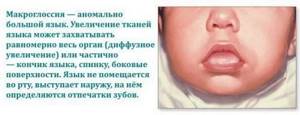
Scientific definition of macroglossia
Macroglossia develops independently against the background of:
- Down syndrome;
- open or malocclusion;
- tuberculosis;
- hormonal imbalance, as well as syphilis;
- infectious diseases that affect the tongue;
- poor circulation or hemorrhages in the oral cavity;
- tongue abscess - death of its tissues; various forms of glossitis (catarrhal, candidal) - enlargement of the nipples of the tongue;
- bruises and injuries, tumors, cysts that affect the circulatory system of the tongue and surrounding tissues, as well as lymph nodes;
- when pus accumulates in the oral cavity - under or above the tongue; and also if the muscles of the tongue are very large - abnormal development;
- acromegaly; myxedema; acute allergic reaction syndrome;
- actinomycosis of the tongue.

Glossitis, as a factor contributing to the enlargement of the oral organ, can be provoked by:
- an abundance of harmful bacteria - viruses found on the tongue;
- scalding with hot food/drinks, poor diet, excessive indulgence in sweets;
- poor dental care, incorrectly selected balm and mouthwash;
- injuries, cuts, chemical burns of tongue tissue.
We invite you to familiarize yourself with rezhutsya-glaznye-zuby - a post by user Yulia (malyish) in the community Children's diseases from one to three years in the Temperature category -
Red dots on the tongue
The appearance of rashes on the tongue is not always the cause of dental diseases. For example, red dots on the tip of the tongue may indicate poor oral hygiene or reduced immunity.
People who often consume seeds experience rashes in the mouth in the form of red dots, which, as a rule, if the person observes hygiene standards, go away on their own.
However, if a white tongue with red dots is observed, this is already an indicator of a fungal infection. This symptom appears with candidiasis and stomatitis.
In what cases can a child’s tongue become enlarged and why is it dangerous?
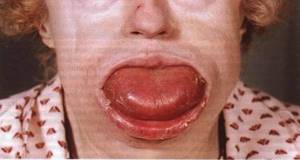
In medicine, an enlarged child’s tongue is called “macroglossia.” This disease is associated with structural abnormalities both on the surface and inside the tongue. A very large tongue can be observed mainly in children; in adults, macroglossia occurs with a frequency of 1–2%.
A doctor can diagnose macroglossia both if the tongue is completely enlarged, and if its individual parts are swollen - the back, tip, side.
Macroglossia of the tongue can be a congenital or acquired disease
A child's tongue that is very large or very thick is called macroglossia. This pathology is caused by structural abnormalities on the surface or inside the organ. Most often, this pathology appears in children. The diagnosis of macroglossia is made by a doctor when the child’s tongue is completely enlarged or certain areas of it are swollen. This disease can be congenital or acquired.
If drug therapy does not bring the desired result, the tongue does not decrease in size, and continues to extend beyond the mouth, surgical treatment will usually be required. The main indications for surgical intervention are:
- difficulties in respiratory function, discomfort from lack of oxygen;
- great difficulty chewing or swallowing;
- distorted appearance;
- a severely disturbed bite, in which it is impossible to treat the surface of the organ;
- too much salivary fluid production;
- great difficulties in the speech apparatus, which cannot be corrected by a specialist.
Surgery involves reducing the tongue to normal size and shape. In most operations, the wedge-shaped portion of the organ is removed, due to which its size becomes smaller. The procedure is carried out under general anesthesia, the function is gradually restored.
If there is an open bite, a special prosthesis is installed that prevents the organ from falling out. In the case of a congenital form of the disease, the child undergoes surgery to ligate the arteries after birth. This way you can stop pathological growth.
If you contact a specialist in a timely manner, the likelihood of a successful recovery is maximum. If the pathological size is due to the presence of a tumor, therapy consists of surgical removal of the tumor, followed by chemotherapy and radiation therapy. With the right approach to treatment and strict adherence to all medical prescriptions, you can stop the development of pathology and get rid of it completely.

Chief author and editor-in-chief: Makarskaya S.E., 29 years of experience.
How to determine the presence of macroglossitis
Doctors divide macroglossitis into two types: false and true. False is associated with abnormal development of the jaw. A narrow, sunken jaw does not indicate true macroglossitis, and is the result of abnormal bone development.
Beckwith-Wiedemann syndrome - abnormally large tongue
With true macroglossitis, the tongue is too large, its size exceeds the norm by 1.5–3 times.
Other signs are also observed:
- the mouth does not close, the muscular organ is protruded;
- increased salivation, drooling;
- the skin in the mouth and chin is irritated;
- teeth marks are visible on the tongue;
- the thick tongue is covered with erosions, ulcers along with the inner surface of the cheeks;
- malocclusion;
- labored breathing;
- difficulty chewing and swallowing food;
- Because of the very large tongue, it is difficult for the patient to speak and it is difficult to understand his speech.
A well-known case of macroglossia - a woman’s tongue grew throughout her life
With true macroglossitis, the tongue is too large, its size exceeds the norm by 1.5–3 times.
Cause of white plaque
The key diagnostic factor is plaque, the loose covering of the organ. It stands out among the mass of disease signals, because it is not part of the language. Plaque is a collection of microorganisms, food debris and keratinized coating that is located on the surface of the tongue. It is often white and varies in thickness. Diagnosis is carried out not only by the condition of the plaque, but also by its location.
There is a normal state of the tongue
The norm for the tongue is a faint white coating at its base; other forms are unacceptable. They indicate a variety of malicious processes.
There are two types of plaque - thin and thick. Through the first, the outlines of the surface are distinguished. Through the second one this is impossible.
Plaque often occurs during febrile illnesses. It is thin but can expand. This indicates the progression of the disease. As well as vice versa, thinning of plaque indicates recovery.
If the plaque is located in the middle part, then this indicates problems with the spleen, stomach or pancreas. The front part signals problems with the lungs.
Color is important when examining plaque. Yellow color indicates stomach diseases.
If it is dirty brown, then this means chronic diseases of the stomach or pancreas. Damage to the spleen and biliary system is also possible.
Plaque is an important factor in diagnosing diseases using the tongue. Its thickness, location and color are important for the final diagnosis. The location of the plaque should be checked with the points responsible for certain organs.
Diagnosis of a child
A routine ultrasound of every pregnant woman helps to identify the disease in the third trimester. Doctors have a special regulatory sheet that specifies the size of each organ, which can be considered normal.
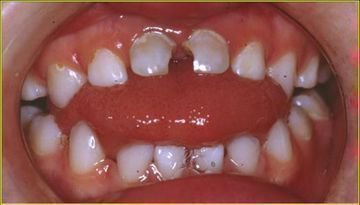
To clarify the diagnosis, a specialist may need to perform ultrasound diagnostics several times.
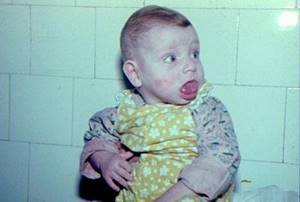
A child with macroglossia often has developmental delays
A child born with a diagnosis of macroglossia must undergo many doctors, namely:
- infectious disease specialist;
- endocrinologist;
- otolaryngologist;
- specialist in genetic issues - geneticist.
Only after a routine examination (instrumental, biochemical), the conclusion of all the above doctors, can a treatment regimen be drawn up.
Uneven increase in tongue tissue due to dental trauma
Some people do not take pathology seriously. Although macroglossia greatly affects the quality of life, it can cause a whole range of diseases.
A child with macroglossia is an associative outcast. Due to slurred speech and an external defect, it is difficult for him to find understanding in his environment. In most cases, children will avoid a child who makes strange noises instead of words.
Overgrowth of tongue tissue as a secondary disease
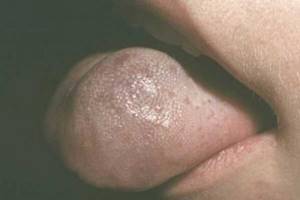
Pathology also activates other ailments:
- Breathing problems. The child acquires the habit of breathing through his mouth.
- Poor diction. It is difficult for the child to pronounce words, and whistling and hissing letters are almost impossible to pronounce at all.
- Teeth become crooked and oral diseases appear.
- Due to the fact that the child is unable to chew food normally, the functioning of the digestive tract is disrupted, which leads to gastritis, ulcers, and colitis.
- The muscular organ constantly dries out, becomes covered with ulcers, and hurts.
- How is drug treatment carried out?
We invite you to familiarize yourself with how children’s teeth grow, diagram from birth
When choosing the type of treatment, much attention is paid to the etymology and form of the disease.
If macroglossitis is caused by a secondary disease, then the main task is to eliminate the source.
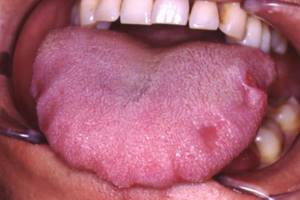
Teeth imprints with increasing tongue size
What types of drugs are included in the treatment regimen:
- antibiotics, both tablets and injections;
- antiseptics;
- anti-inflammatory agents - rinses.
Along with treating the underlying disease, medications have a positive effect on the oral cavity - the muscular organ gradually decreases.
White spots on the tongue: in an adult, on the side, tip
Different white spots on the tongue can indicate various disorders in the functioning of the body. It is important to look at them to determine what type they are. This will help you correctly know what the symptom is talking about.
Are you having any problem? Enter “Symptom” or “Name of the disease” into the form, press Enter and you will find out all the treatment for this problem or disease. The site provides reference information.
Adequate diagnosis and treatment of the disease is possible under the supervision of a conscientious doctor. Any medications have contraindications.
Consultation with a specialist is required, as well as detailed study of the instructions! Here you can make an appointment with a doctor.
Reasons for appearance
To determine the true cause of the appearance, it is necessary to consider them. They differ in appearance. It is much less common to completely cover the entire tongue, which is why it increases in size. Sometimes the symptom occurs due to the food consumed.
They may appear as a signal about the development of some disease in the body. Among a huge number of diseases, stomatitis often provokes the occurrence of this unpleasant symptom.
In addition to the tongue, the spots spread to the cheeks and gums. This is a feature of stomatitis.
Sometimes such manifestations indicate that a person has measles. But if in addition there are also red dots, then you should immediately undergo an examination.
Often the listed signs indicate various malfunctions of the kidneys. The spots are located on the sides.
Often the symptom is intense in people who smoke. Moreover, men are more susceptible to the disease than women.
White plaque and red rashes
White coating on the tongue and red spots often indicate an allergic reaction to certain foods or medications. Examine the spots and pay attention to whether they itch. If this is the case, then the person may have become infected with shingles.
This symptom also indicates a dysfunction of the stomach and circulatory system. It is important to pay attention to the presence of a contour around the spot and a yellow border.
Sometimes it appears in a pregnant woman, but it does not cause her any discomfort. For them to pass, you need to drink a lot of fluid.
Green tea and natural juices help well. If the symptom causes even minor troubles, it is important to consult a doctor immediately.
If such a plaque appears and is covered with red spots, then this indicates the development of lichen. The disease is accompanied by chills, fever, and the patient’s overall health worsens.
There is no need to ignore this symptom, because if it really is lichen, then the disease must be treated urgently. Delayed assistance will cause serious complications. Showering is strictly prohibited.
White plaque and red spots require immediate symptomatic treatment. It is aimed at eliminating factors that lead to irritation. The most common include spicy food, dental sanitation, the use of dentures, hot food, and sharp edges of fillings.
Antiseptic treatment and careful oral hygiene are important. Effectively use healing drugs.
https://feedmed.ru/uhod/problemy/belye-pjatna-jazyke.html
Spots under the tongue
A white spot under the tongue can appear for various reasons.
More often their development is provoked by factors:
- Acute and chronic lesions of the tongue itself. These include various infections and inflammations, exposure to medications.
- The symptom develops due to various infectious diseases.
- This often indicates a dysfunction of internal organs.
- Develops due to hypovitaminosis and dysbacteriosis.
- Talks about the development of cancer.
If the appearance of light spots is not associated with the development of a specific disease, then this may indicate the following:
- Poor hygiene;
- Excessive alcohol consumption;
- Smoking abuse;
- Eating foods that are similar in color;
- Incorrectly selected toothpaste or mouth rinse.
A white spot under the tongue indicates problems with the gastrointestinal tract, excessive consumption of sweet foods, and thrush. They may appear due to hormonal imbalances, which are accompanied by burning and dry tongue.
White growths at the tip
The appearance of white rashes often indicates that a person smokes a lot or uses chewing tobacco. This is dangerous because it leads to the development of cancer.
If you do not consult a doctor and do not receive timely treatment, the disease may develop into a more acute form. Smoking often leads to the development of leukoplakia.
Sometimes they look similar to the scaly formations that appear with eczema. At best, they indicate a simple cold.
Light spots on the tip of the tongue often appear in people who suffer from stomach problems. There is no need to hesitate to visit a gastroenterologist. Timely treatment will avoid complications of the disease.
It is impossible to say unequivocally what the meaning of a symptom is, which is why it is so important to consult with a specialist on this issue.
If the rash appears on the side
Often white spots on the side of the tongue appear in people who wear dentures or braces. The symptom may indicate a malocclusion. At first, this may seem harmless, but if you do not seek help in time, it leads to the development of cancer, often malignant.
If a woman has thrush, the symptom signals the development of candidiasis. Due to the fact that thrush is caused by a fungus, it can spread to the oral cavity.
Light-colored spots are located on the side, and along with them appear on the gums and cheeks in the form of a cheesy consistency.
As a result of dehydration, the oral cavity becomes dry, which is why these signs develop on the sides. The symptom may indicate the development of lichen, untimely treatment of which leads to the development of a cancerous tumor. Cases have been recorded where the symptom signaled hepatitis C and HIV.
Surgery for macroglossitis
If the tongue extends beyond the oral cavity, and medications do not give the desired result, surgical intervention is required.
Indications for surgery may be:
- breathing problems, the patient experiences discomfort from lack of oxygen;
- chewing and swallowing occurs either with great effort or is impossible;
- appearance is greatly distorted;
- the bite is open due to which local treatment cannot be carried out;
- abundance of saliva;
- Speech problems cannot be treated by a speech therapist.
Tongue reduction surgery is the most effective treatment method
The main task during surgery is to return the tongue to its normal shape and size. In most cases, the task is accomplished by removing the wedge-shaped part of the tongue. The functionally significant part is excised under general anesthesia, the tongue becomes normal in size, and its functionality is not impaired.
Allergic macroglossia - swelling of the tongue
If a child has an open bite, he is given a prosthesis that prevents the tongue from falling out.
If macroglossia has a congenital form, the arteries of the tongue are surgically ligated at an early age. This approach helps slow down abnormal growth in size.
Enlargement of the tongue due to thyroidism - a disease of the thyroid gland
If you consult a doctor in a timely manner, the chance of a positive outcome is maximum.
When the pathology is associated with a neoplasm, treatment is carried out comprehensively through surgery, chemotherapy methods, drugs, and radiation therapy.
The correct approach to the disease and compliance with the doctor’s instructions will help slow down the development of the chronic form of the pathology or completely eliminate the disease. Your child will not feel discomfort while living life to the fullest.
Language and related issues
(WHAT PARENTS NEED TO KNOW)
The tongue is a relatively small organ of the human body, however, it is in it that reasons may be hidden not only with problems with sound pronunciation, but also with health in general.
All parents are interested in their child growing up healthy, so that he develops sounds in a timely manner and has free and expressive speech. Therefore, a dental surgeon must carefully examine the child’s oral cavity in the maternity hospital, or, in extreme cases, in the first month of life.
In the future, such inspections should be carried out at least once a year, preferably once every six months.
Pathologies in the structure of the tongue
What could be special about the structure of language? This is difficult for parents to understand. The dentist will immediately notice problems. For example, a pathologically small tongue (microglossia), or an excessively large tongue (macroglossia).
Microglossia leads to difficulties with feeding: the baby’s sucking, chewing and swallowing processes are disrupted, digestive problems begin, the child does not gain the required weight and every month lags further and further behind his peers in his psycho-physical development, and often gets sick. Subsequently, such a child begins to speak late and has multiple defects in sound pronunciation. The small tongue is not able to take the desired articulatory position: the amplitude of its movements is too small.
In the case of microglosia, a pediatric dental surgeon performs tongue plastic surgery. At what age? Only the doctor can decide this. After the operation there is a rehabilitation period and sessions with a speech therapist.
Macroglossia, or, as speech therapists say, a massive tongue. Such a tongue does not fit in the oral cavity and literally falls out of the mouth. This is also a big disadvantage for correct sound pronunciation and food intake. A dental surgeon comes to the rescue again; he performs an operation to reduce the muscle mass of the tongue, that is, plastic surgery.
Yes, the operation is traumatic, after it there will be problems with eating for some time, but all these phenomena are temporary, but then - a normal appearance and correct sound pronunciation, of course, subject to further speech therapy work.
It happens that a child is born with a forked tongue (the so-called “snake tongue”). During the Middle Ages, the fate of a person with such a pathology was unenviable: such a language was considered an attribute of evil spirits. Nowadays, this mistake of nature no longer causes panic among others and is eliminated with the help of plastic surgery.
Unfortunately, language-related problems are not limited to the examples above.
Parents' attention should also be drawn to the child's tongue being too pale, loose and flaccid. In such a language, muscle tone is reduced (hypotonicity), its movements are slow and unclear, and it is sometimes impossible for him to take the necessary articulatory posture to pronounce a particular sound. Hence the errors in sound pronunciation: “porridge in the mouth.”
If the tongue is too tense, which is why its back is upturned, like a “hump,” and in the protruded position the tongue turns blue, the tip of the tongue deviates to the side, there is hypertonicity. In both the first and second cases, the child should be shown to a pediatric neurologist; perhaps such phenomena are a consequence of birth trauma, encephalopathy or some other diseases.
What else can a child’s tongue “tell” about? Recently, children with “geographical language” have become increasingly common. The surface of such a tongue is covered with streaks of white, brown and pink colors, with outlines reminiscent of a map of the continents, hence the name. At the same time, the mucous membrane of the tongue is shiny, as if polished, and taste buds are faintly visible on it.
Sometimes the surface of the tongue is dotted with deep grooves, like wrinkles. A sort of old tongue. He is painfully dry and inactive, which negatively affects sound pronunciation. A similar feature occurs when there is a disruption in the endocrine system, so do not put off a visit to the endocrinologist.
The sooner parents see their child’s “language problem,” the more successfully it can be solved by turning to specialists for help.
Hyoid frenulum
Is the frenulum (ligament) under the child’s tongue unacceptably short, or is it completely absent? In the latter case, the tongue is jelly-like and gelatinous, as if devoid of muscle mass. Such a language cannot cope with the correct pronunciation of sounds. The operation will not help here; all hope is in the speech therapist: with the help of special articulation exercises, it is possible to achieve a lot: increase the mobility of the tongue, prepare it for the correct pronunciation of sounds.
We invite you to familiarize yourself with what teeth change in children: diagram, when they change, at what age they change to permanent ones
It is not easy to see the child's hyoid frenulum. It is good if this procedure is performed by a dentist. Parents themselves should not grab their tongue and lift it. Firstly, the child is unlikely to tolerate such treatment, and secondly, without sufficient knowledge and skills, the mucous membranes of the oral cavity can be seriously injured. The child himself must demonstrate the hyoid frenulum, and voluntarily. You'll have to use little tricks.
Trick one: “My tongue rises high, high!” An adult opens his mouth wide and pulls the tip of his tongue towards the palate. "And you?" - he asks. A competition begins, during which you try to examine the child’s hyoid frenulum.
Trick two: “Who will click his tongue louder?” Clicks are made only with the mouth wide open. The upper surface of the tongue is firmly attached to the palate. This is that short moment of happiness when the hyoid frenulum appears to the parents in all its glory. But this moment quickly passes, and the tongue leaves the palate with a resounding click. Didn't have time to see the connection? Ask your child to repeat the exercise again or use a third trick.
Trick three: “Is there a mushroom growing in your mouth?” “And for me it’s growing!” - the adult speaks with intriguing intonation and demonstrates the wonders of articulation: he sucks his tongue to the palate and holds it in this position for some time. The child admires the resulting “fungus”. “Let’s grow a fungus in your mouth,” says the adult.
Its structure and size are very diverse. It is very rare, but you can find a forked bridle, even a triple one.
The hyoid frenulum can be an almost invisible transparent film that does not interfere with the functioning of the tongue at all. Or it can be dense, massive and so short that the baby is not able to lift his tongue up even a couple of millimeters.
Let's consider several of the most common deviations from the norm in the structure of the hyoid frenulum:
- Ø The frenulum is thin, almost transparent, but still prevents the tongue from rising.
- Ø The bridle is thin, like parchment paper. Its anterior edge is attached close to the tip of the tongue. Because of this, in the protruded position, the tongue (its tip) bifurcates into a “heart” shape.
- Ø The frenulum is a dense short cord consisting of tendon fibers. It is attached close to the tip of the tongue. The upward movement of the tongue is significantly limited. When you try to stick your tongue out of your mouth, its tip curls up and the back of the tongue “bulges out.”
- Ø A dense short cord of the frenulum is tightly fused with the muscles of the tongue, it is attached almost to the tip of the tongue. All movements of the tongue are sharply limited.
- Ø It is difficult to understand where the frenulum is and where the tongue is, they are a single whole. It seems that the tongue has fused with the floor of the mouth. With such a language, it’s not only impossible to speak, it’s impossible to eat!
All these deviations from the norm in the structure of the hyoid frenulum will at first complicate the process of feeding the child, and subsequently will prevent the timely appearance of not only the sounds [P] - [P'], but also the whistling sounds [S], [Z], [C]; hissing [Sh], [F], [H], [Sh]; sonors [Y], [L], [L'], back-lingual [K], [G], [X].
Parents for the most part do not like to listen to arguments in favor of surgery on the hyoid frenulum. They rely on exercises that supposedly stretch the frenulum. A similar misconception is noted among speech therapists. We would like to disappoint you: the frenulum does not stretch during speech therapy work, although with the help of special articulation exercises you can significantly increase the mobility of the tongue, due to which the impression is created that something has “stretched” somewhere. In fact, the time for producing sounds is extended, wasting the energy of both the child and the speech therapist.
- formation of malocclusion: progenia (the lower jaw is pushed forward), oblique bite, anterior open bite, lateral open bite;
— incorrect formation of the velopharyngeal ring: the child’s voice takes on a nasal tone;
White spots on the tongue of an adult (dots): symptoms, why they appeared and hurt, treatment
Language can tell a lot about a person. By its appearance, specialists can identify more than one pathology that affects internal organs. They begin to pay attention to the condition of the tongue if any discomfort is felt, cracks or spots appear. Such manifestations signal that an abnormal process is developing, when its signs are still not noticeable.
Features of changing the type of language
The whitish plaque in the form of dots that covers the surface of the tongue is formed due to the fact that the cells of the miniature papillae become rough and keratinized. This phenomenon is caused by:
- the presence of infection inside the body;
- problems with the digestive tract;
- taking pharmaceutical drugs;
- diseases .
If a person’s health is fine, the tongue has a faint pink tint. A small amount of plaque can be easily cleaned off. The papillae do not thicken. There is no specific smell.
You need to think about the presence of a possible pathology of some organ when a burning sensation or pain occurs, loss of taste, or a feeling of dryness. A sign of a developing health problem can be the fact that the back of the tongue changes color to yellow or gray, and redness appears on the sides. Enlarged papillae become like bright spots.
A plaque is visible on the swollen surface. If you clean it, the dots form again.
Reasons for education
If an adult has spots on the tongue, then a doctor can determine the cause of this phenomenon by analyzing the results of the prescribed examination. Plaque forms not only when inflammation occurs in the internal organs, but also when the disease affects the tongue itself. Such pathologies include glossitis - desquamative, aphthous, ulcerative, mycotic, herpetic.
At the first appearance, red spots appear on the surface, which represent papillae that have changed shape or areas that have lost their epithelium.
With aphthous glossitis, ulcers and a gray coating appear in the upper layer of the tongue, and there is a rotten smell. With pharyngitis or tonsillitis, which is caused by a fungus, mycotic glossitis occurs, which is characterized by whitish dots.
With herpes, blisters form that fill with liquid.
Plaque can also be caused by:
- ignoring hygiene;
- eating food that has a white tint;
- smoking and drinking alcohol;
- thrush;
- candidiasis.
Staining with products such as cottage cheese, sour cream, and sweets disappears quickly, it does not harm health, and the plaque is cleaned off on its own.
Due to improper oral care, food particles remain on the papillae, which provokes the proliferation of microbes and the appearance of a specific odor. You can get rid of such white spots by starting to maintain hygiene.
Types of plaque in pathologies of the digestive organs
Acute gastritis is accompanied by nausea and stomach pain. White dots appear on the surface of the tongue. In the chronic form, the plaque takes on a yellowish or gray tint, and the papillae become inflamed. A person suffers from belching and heaviness in the stomach.
The ulcer is characterized by whitish dots that find a place on the root of the tongue. There is an unpleasant burning sensation. With pancreatitis, taste is lost and the mouth feels severely dry. The patient suffers from attacks of severe pain.
With stomach cancer, the entire cavity, and not just the tongue, is covered with a dense coating, from which a rotten smell emanates. It appears due to the release of decay products, the presence of pathological microorganisms, and a large number of leukocytes.
White spots due to fungal and infectious pathologies
A coating on the tongue in the form of white dots is often present at high temperatures, accompanies scarlet fever, and appears during infestation with worms, dysentery, and sore throat. In an AIDS patient, the formation of plaque is facilitated by infections and bacteria, which are sent without obstacles into the body, since the immune system is not able to perform its functions.
With diphtheria, the tongue and oral cavity become covered with white dots. The person cannot swallow. The lymph nodes become swollen and a film forms on the tonsils. Plaque appears during influenza and often indicates the development of vitamin deficiency.
Pimple-like spots are a symptom of stomatitis. With this pathology, many white formations appear, which sometimes merge into a spot. They are observed at the end of the tongue, near the root, and find a place at the base.
With candidiasis, plaque resembles cottage cheese and is located throughout the mucous membrane. The rash is accompanied by pain. The disease affects not only infants, it occurs in older children and in people who have low immunity.
White spots against a red frame are observed with aphthous stomatitis, which occurs when viruses enter. With pathology, the temperature rises, sleep is disturbed, and pain makes it difficult to eat. This problem often occurs in children who visit kindergarten, since hands and toys, and with them the infection, find a place in the mouth.
Remove plaque by washing the cavity with antiseptics in the form of Dimexide, potassium permanganate, hydrogen peroxide, Furacillin. Apply Methyluracil ointment. Sprays or aerosols are used to relieve pain.
Teenagers also often develop white spots. They occupy the surface of the tongue and form on the inside of it, in the fold under the lip. Points arise due to:
- frequent colds;
- overwork at school;
- improper diet;
- lack of oral care
White spots in both adults and children sometimes occur due to the presence of the herpes virus. The bubbles that appear burst, and erosion takes the place. It will not be possible to cope with them without the use of Acyclovir.
Features of plaque in galvanic stomatitis
With galvanic stomatitis, a white coating may appear if there are metal dentures in the mouth that cause irritation. This phenomenon occurs when, when installing them, it was not taken into account that a person has problems with his bite.
Sometimes the tongue is damaged by braces or sharp edges of the tooth. White formations are formed from the remains of the epithelium and pus. They are able to give way to a bleeding ulcer and then a cancerous tumor.
Glossitis, in which the papillae become inflamed, is often preceded by injury to the tongue when biting into hard food. The cavity can be scratched by bone.
Multiple whitish spots can form after taking antibiotics for a long time, since they fight not only bacteria, but also beneficial microflora. There is a plaque in people who have been smoking a lot for a long time. This pathology is called leukoplakia.
The appearance of pimples in the area of the tongue root can be caused by toothpaste containing anise or eucalyptus oil.
The presence of dots and spots in internal pathologies
Plaque, which is constantly present on the tongue, often serves as a secondary sign of a pathological process that occurs in the body. But a diagnosis is not made based on its presence alone.
White dots cover part of the cavity and tongue of heart patients, people who have problems with the kidneys and lungs. Yellowish or brown plaque accumulates on the surface when the gallbladder is inflamed. The tongue acquires a whitish tint due to anemia, with pathologies that affect the salivary glands.
Dry mouth is characteristic of endocrine disorders. The cavity is completely covered with plaque or individual spots appear. Ulcers and aphthae often form.
Diagnostic methods
A visit to the doctor cannot be canceled if the white spots on the tongue do not go away. Only after examining the patient will the specialist be able to prescribe the necessary therapy. To find out why the plaque appeared, they take blood for a biochemical analysis, for the presence of sexually transmitted infections, and examine the feces for the presence of worms.
By resorting to fibrogastroduodenoscopy, they check that there are no pathologies of the digestive organs. An abdominal ultrasound procedure is prescribed. Often they turn to an electrocardiogram and resort to gastroscopy.
Treatment method
Treatment that will allow you to get rid of white spots on the tongue is prescribed taking into account the identified pathologies. If they are not eliminated, the plaque will form again. Sometimes the problem goes away just by changing your diet and eating habits. Often it is necessary to treat the oral cavity, remove decayed teeth, and remove unsuitable dentures and braces.
When an infection, bacteria or fungi, is detected, a whole range of drugs is prescribed to help cure them. When the body's protective functions are weakened, immunomodulators are used and vitamins are consumed.
If plaque appears due to candidiasis, the mouth should be rinsed well with a soda solution. White dots are cleaned off with sterile cotton wool or a special brush that has a ribbed surface. The tongue and mucous membranes are treated with antiseptics in the form of a solution of Tantum Verde, Rivanol or chlorhexidine.
Nystatin ointment is applied, which prevents the fungus from spreading. Relieve inflammation with Corsodil. Wounds will heal faster when using aloe liniment, sea buckthorn oil or rosehip oil.
At home, you can get rid of glossitis only at the beginning of its development, if the surface of the tongue is injured by a burn or mechanical force, since self-treatment can lead to a complicated form.
To prevent whiteheads from causing discomfort, you need to prevent their occurrence. Germs will not develop in the oral cavity if you do not forget to brush your teeth. To prevent pathology, products must contain retinol, vitamins B and C. It is worth stopping smoking, abusing alcohol, drinking less coffee and tea, and not indulging in sweets.
Rinsing your mouth with an infusion brewed from chamomile, calamus or calendula helps speed up recovery.
Source: https://dentalblog.ru/nalet/belye-tochki-na-yazyke/
Why does the disease appear?
Congenital macroglossia develops during prenatal development of the fetus. Various factors can influence the development of pathology. It can develop independently against the background of such diseases:
- Down syndrome;
- malocclusion;
- tuberculosis;
- hormonal dysfunctions;
- syphilis;
- infectious processes in the body;
- impaired microcirculation of blood fluid, hemorrhages in the oral cavity;
- organ abscess;
- glossitis;
- bruises, injuries, neoplasms of various types;
- lymphadenitis;
- development of a purulent focus;
- abnormal structure of the tongue muscles;
- acromegaly (a disease associated with excess production of growth hormone);
- myxedema (“mucous swelling” due to a lack of thyroid hormones);
- acute allergic reaction;
- actinomycosis lesion.
The listed diseases may be accompanied by such a symptom. Therefore, it is important to consult a doctor in a timely manner to determine the cause of macroglossitis and prescribe adequate therapy.
Causes
Hyperpigmentation
Black spots with hyperpigmentation of the tongue
Pigment spots in the oral cavity can occur due to changes in melanin, melanoid, and a decrease in the level of hemoglobin and carotene. Pigmentation caused by an increase in the amount of melanin can appear as small brown, black or gray, and sometimes blue (depending on the concentration and location of the pigment) spots. Why? According to the American Advanced Clinical Dentistry, “human oral mucosal epithelium is not uniformly colored and may differ by several shades in physiological and pathological conditions.”[nlm.nih.gov]
Pigmentation of the tongue may also appear as brown spots. Clinical experience and observation have shown that dark pigments resulting from changes in the type or increase in the amount of melanin are not associated with tongue injuries.
Pigmentation can occur in all races and both sexes. However, the intensity may vary depending on endogenous and exogenous etiological factors.
Beginning of development of black hairy tongue
Black hairy tongue
The presence of black spots on the tongue is a characteristic manifestation of the first signs of a hairy tongue.
Common signs of this problem include a dark, mossy coating on the tongue and a burning sensation.
Although the development process and causes of this pathology are not very clear, doctors identify a number of risk factors, including poor oral hygiene, the use of certain medications, chewing tobacco and smoking.
Over time, the black hairy tongue goes away on its own. However, gentle application of a tongue scraper will help remove the plaque.
In any case, it is recommended to obtain confirmation of the diagnosis from a doctor. In addition, the symptoms of a black hairy tongue can lead to a literal blackening of the tongue.
Damage, including piercings
Trauma can cause small or very small black spots on the tongue. Examples of situations that result in damage to tongue tissue include biting, oral surgery, and the use of dental equipment. The spots may also appear under the tongue or on the sides of the tongue.
In addition to increasing the risk of oral infection, tongue piercing is a possible cause of dark pigments or spots. After a piercing, irritation of the mucous membrane can lead to loss of pigment, especially at the piercing site. The pigment that forms around the piercing is expected to disappear after healing and good oral care.
Oral fibroma
It is a single or rarely multiple benign tumor-like growth of the oral mucosa that can be hard or soft and usually white or pink. Signs of fibroma are well defined after a biopsy performed due to the presence of a suspicious formation.
Unlike cancer, which develops as a result of uncontrolled and rapid cell growth, oral fibroids are usually a growth of normal tissue in response to localized injury or irritation. They may increase in size, but are not precancerous.
There are several types of oral fibromas, but the appearance of black spots on the tongue is usually associated with the so-called irritation fibroma.
According to statistics, fibroids are much less common than cancer - only 1-2 per 100 patients.
Other reasons
Below are other factors that can cause your tongue to change color:
- some medications, such as bismuth subsalicylate, containing narcotics and antidepressants;
- excessive chewing of tobacco and drinking alcohol;
- consumption of coffee and licorice drinks;
- birth control pills, especially during pregnancy;
- immunosuppression, chemotherapy and infections that reduce immunity, such as HIV infections and herpes;
- allergic reactions can cause sudden appearance of spots on the tongue;
- anemia (usually in children).
How to detect pathology
Doctors distinguish between false and true macroglossitis. The first is due to the abnormal structure of the jaw apparatus. At the same time, the jaw is narrow and slightly sunken, but this is not evidence of a real disease, it is the result of an abnormal structure of the bone apparatus and tissues.
When the true form of the disease develops, the tongue is too large, its volume is several times higher than normal. In addition, additional symptoms are:
- inability to completely close the mouth, the organ is stuck out;
- increased production of salivary fluid, there is a lot of it in the mouth, it flows out or drips;
- irritation and redness of the skin under the lower lip and on the chin;
- imprints from the teeth are visible on the surface of the organ, it can also become covered with ulcers or erosions;
- presence of malocclusion;
- Difficulty eating – difficulty chewing and swallowing;
- difficulty speaking.
Diagnostic measures
When undergoing a routine ultrasound examination during the third trimester of pregnancy, the doctor may detect congenital macroglossia. It is determined after comparison with the norms of each age at a given stage of fetal development. To make an accurate diagnosis, a repeat test is scheduled.
After the birth of the child, an examination awaits from many specialists - an infectious disease specialist, geneticist, otolaryngologist, endocrinologist. An instrumental examination is carried out, and a biochemical study of the blood fluid is prescribed. Based on the results of all tests and diagnostic methods, a diagnosis is made and therapy is prescribed.
